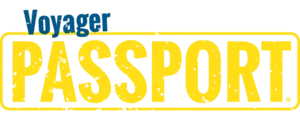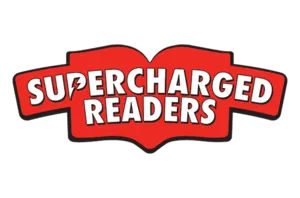What are Vowel Teams?
Vowel teams are necessary for reading and spelling. They involve blending two vowels to make one sound. Effective teaching strategies include clear instruction, pattern recognition, multisensory activities, and engaging games. Use our Sound Partners and Decodable Readers solution to provide targeted support for mastering vowel teams and proficiency in reading.
When children start sounding out new words, they’ll often hit a roadblock when they reach vowel digraphs, or as they’re commonly referred to, vowel teams. These sometimes tricky vowel pairings can be a common source of reading and spelling errors which can lead to frustration for both students and educators.
However, mastering vowel teams is crucial for developing strong reading and writing skills so it’s important to teach the topic effectively and to help students overcome any difficulties they may face. In this article, we’ll explore what vowel teams are and ways to teach them to young learners.
Understanding Vowel Teams
Vowel teams are a type of digraph, which is when two letters come together to make one sound. Digraph is a broad term that applies to both vowels and consonants. Vowel teams, on the other hand, is a more specific term that refers to when two vowels make one sound.
In a similar way to all squares are rectangles but all rectangles are not square—all vowel teams are digraphs, but not all digraphs are vowel teams. For example, “sh” and “ch” are consonant digraphs, and “ai” and “ee” are vowel digraphs (aka vowel teams). Here are some common vowel teams and example words:
Long vowel sounds:
- ai: rain, pain, train
- ay: day, play, say
- ea: tea, sea, meat
- ee: bee, feet, sleep
- ie: tie, pie, lie
- oa: boat, coat, soap
- oe: toe, hoe, doe
- ou: mouse, house, cloud
- ow: cow, bow, how
Short vowel sounds:
- oo: book, cook, look
- ou: could, should, would
Other common vowel teams:
- oi: oil, coin, noise
- oy: toy, boy, joy
- au: caught, taught, daughter
- aw: saw, paw, draw
Disclaimer: While these are some of the most common vowel teams and patterns, there are exceptions and variations in vowel team sounds.
A special type of vowel team is a diphthong. Vowel diphthongs are when two vowel sounds blend together to create a single, smooth gliding sound. Some examples of diphthongs are “oi” in “oil,” “ou” in “house,” and “oy” in “boy.”
To make things more complicated, some letter combinations that produce vowel sounds do include consonants. These include the “w” in “cow” and the “gh” in “high.” While these combinations aren't technically vowel teams, they do contribute to the vowel sound and often appear in patterns with vowel teams.
Why Vowel Teams Are Integral in Reading and Spelling
Vowel teams are fundamental to reading and spelling in the English language. English has more vowel sounds than individual vowel letters, so vowel letters are combined to make those sounds. These combinations allow us to read, spell, and pronounce words accurately. By understanding how vowel teams work, learners can:
- Decode Unfamiliar Words: When students recognize vowel team patterns, they can break down unfamiliar words into their component sounds. This makes them more manageable.
- Spell Accurately: When students have a solid grasp of vowel team combinations and patterns, they are better able to spell words correctly. This is especially true when it comes to words with long vowel sounds or unique pronunciations.
- Read Fluently: When students can quickly recognize vowel teams, their reading becomes smoother and more fluent. This allows them to focus on comprehending the text rather than struggling with individual sounds.
Decoding Vowel Teams
Decoding, or sounding out words, is a fundamental reading skill, but vowel teams can sometimes trip up early readers because they may try to sound out each vowel individually. Here's how to support learners in decoding vowel teams:
- Isolate the Vowel Team: Help students identify the vowel team within a word and say its sound. For example, "ai" in the word "rain."
- Blending Sounds: Once the vowel team sound is isolated, guide students in blending it with the surrounding consonants to form the word. In "rain," this would be "r-ai-n." Then say the full word all together.
- Practice With Familiar Words: After teaching vowel teams through explicit, systematic instruction, read books or short texts, like decodable readers, that contain vowel team patterns. This will reinforce learning and help students build their confidence.
- Address Challenges: When encountering difficulties, provide explicit instruction, visual aids, and opportunities for more practice with challenging vowel team combinations.
Decoding vowel teams can be a challenge, especially when encountering less common combinations or words with multiple vowel teams. Therefore using visuals, clear explanations, and breaking down tough words can help students learn these important word patterns.
Teaching Strategies for Vowel Teams
To effectively teach the different types of vowel teams, it’s best to use a variety of methods. Some students may benefit more from visual aids, while others may learn better with kinesthetic or auditory learning techniques. Here are a few methods to try:
- Explicit Instruction: Clearly explain the concept of vowel teams, providing examples (“rain”) and non-examples (“water”).
- Start With the Basics: Begin with the most common vowel teams and gradually introduce more complex ones. For example, start with vowel pairings like 'ai,’ 'ee,’ and 'ou.’ These have the most consistent pronunciations. Therefore, beginning with them will build a strong foundation and support students’ confidence.
- Focus on Patterns: Help students recognize recurring patterns in vowel combinations so they can begin to anticipate the sounds these combinations represent. Word sorts (categorizing words based on vowel teams) help to highlight these patterns.
- Multisensory Learning: Combine visual, auditory, and kinesthetic elements by using colorful charts, and songs, and doing hands-on activities.
- Interactive Games: Games like bingo or matching card games can make learning vowel teams fun and engaging.
- Use Technology: Utilize educational apps and websites that provide interactive exercises and games.
- Small-Group Instruction: Provide targeted support to students who need extra help.
- Independent Practice: Offer worksheets, workbooks, or online activities for reinforcement.
Tips for Teaching Vowel Teams
Since teaching vowel teams can be a bit of a challenge, you may need to get creative when lesson planning. Here are some additional ideas and tips to make vowel team instruction even more effective:
- Keep It Fun: Use games, songs, arts and crafts projects, and other creative activities to keep students engaged and motivated.
- Use Visual Aids: Use colorful pictures, charts, or diagrams to illustrate vowel team patterns and their corresponding sounds. Write out words and use different colors to highlight the vowel team. For example in the word “rain” write “ai” in red to highlight the vowel team.
- Get Students To Move Around: Physical activities like clapping out syllables, writing letters in the air, or dancing to vowel team chants can be a great interactive way to learn.
- Provide Hands-On Activities: Engage students in activities that involve manipulating objects or creating physical representations of vowel teams. For example, using letter magnets or blocks to build words can help solidify their understanding.
- Provide Regular Practice: Have students do short, daily activities to help reinforce learning. Mix up what you do each day to keep the lessons feeling fresh and to engage different types of learning styles.
- Celebrate Success: Acknowledge and celebrate students' progress, no matter how big or small. This keeps them motivated, helps their confidence, and fosters a positive learning environment.
- Use Worksheets: Worksheets are great practice tools. Look for worksheets with activities that involve identifying vowel teams in words, matching sounds to spellings, and filling in missing letters.
Connecting Vowel Teams To Real-World Scenarios
To make vowel team learning more meaningful, connect it to real-world contexts and show students how vowel teams are used in everyday words and phrases.
- Explore Homophones: Teach students about words that sound alike but have different meanings, like "sea" and "see." This emphasizes that sometimes vowel teams can sound the same even though they have different spellings. It also demonstrates the role vowel teams play in differentiating words which helps students distinguish them.
- Analyze Word Patterns: Examine how vowel teams contribute to word families and spelling rules. This will help learners predict the sounds and patterns of unfamiliar words.
- Go on a Word Hunt: Challenge students to find words with specific vowel teams in books, magazines, or on items around the room.
- Read Aloud and Discuss: Read aloud together and have students point out vowel team patterns.
- Encourage Creative Writing: Have students write stories or poems using words with different vowel teams.
Vowel Team Resources From Voyager Sopris Learning
Voyager Sopris Learning® offers a range of solutions to support effective vowel team instruction. Sound Partners, a research-based supplementary tutoring program, provides explicit teaching of vowel teams alongside engaging activities and practice. This program emphasizes phonemic and alphabetic skills, phonemic decoding skills, and assisted oral reading practice with decodable texts. Using solutions like Sound Partners and decodable texts like Power Readers and Supercharged Readers empowers educators to equip students with the skills needed to decode words confidently, spell accurately, and become fluent readers.
Concluding Thoughts About Vowel Teams
Mastering vowel teams is essential for building strong reading and writing skills. By understanding how vowel combinations create different sounds, students can confidently decode words and express their ideas. With a solid foundation in vowel teams, students will be able to tackle even more of the complexities of the English language and become proficient readers and writers.


